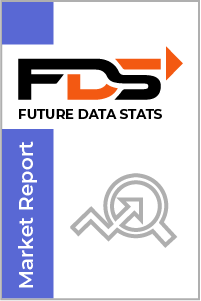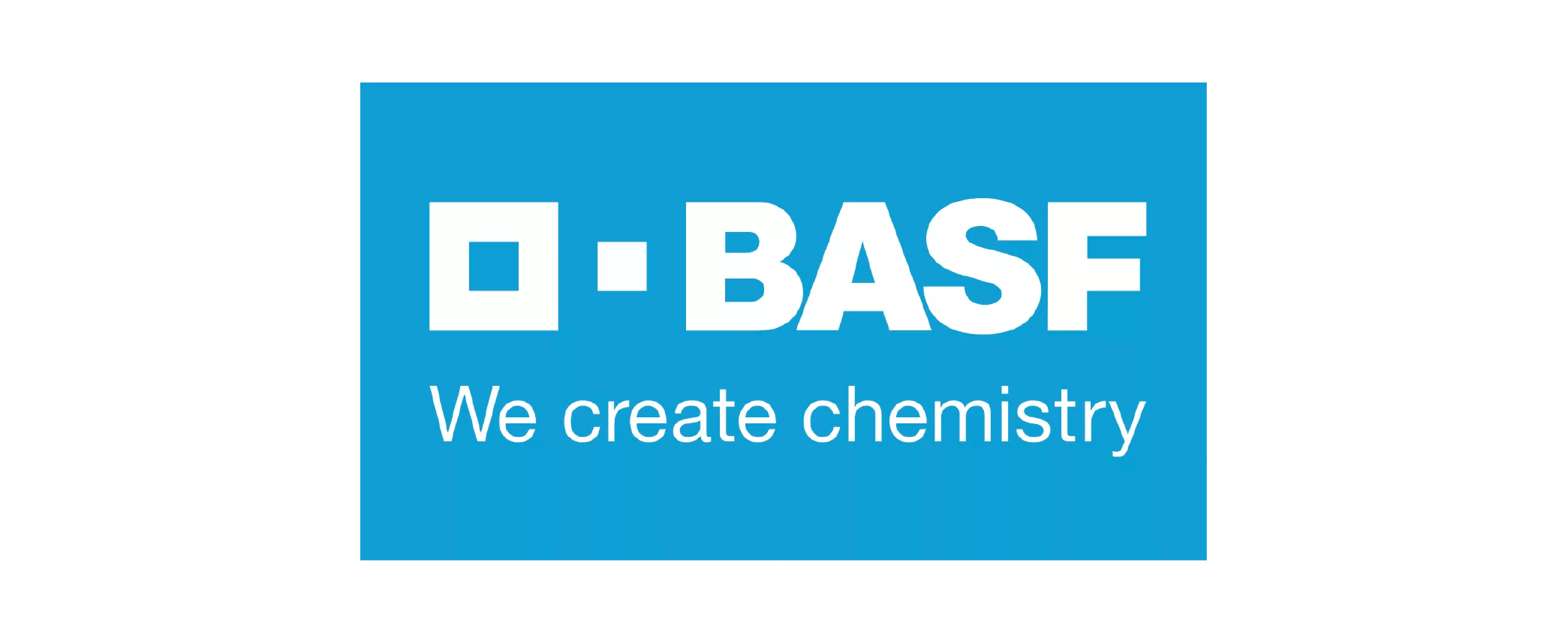The global Genome Editing Market size was valued at USD 10 Billion in 2024 and is projected to expand at a compound annual growth rate (CAGR) of 16% during the forecast period, reaching a value of USD 25 Billion by 2032.
The "Genome Editing Market Research Report" by Future Data Stats presents a comprehensive analysis of the market landscape, drawing on historical data from 2021 to 2023 to uncover significant trends and growth trajectories. Establishing 2024 as the baseline year, the report delves into consumer behavior, competitive dynamics, and regulatory contexts that shape the industry. It goes beyond mere observation, offering a meticulously researched forecast that spans from 2025 to 2033. Utilizing advanced data analysis techniques, the report not only charts the market's growth path but also highlights emerging opportunities and anticipates potential challenges, equipping stakeholders with crucial insights to navigate the evolving market environment effectively.
MARKET OVERVIEW:
Genome editing is a revolutionary technology that allows scientists to modify an organism's genetic material with precision. It involves techniques like CRISPR, TALEN, and ZFN to make targeted changes in DNA, enabling advancements in various fields such as healthcare, agriculture, and biotechnology. For the market, genome editing presents opportunities for developing new treatments for genetic diseases, improving crop yields, and enhancing industrial applications. In the context of the market, genome editing is driving innovation and creating growth in sectors like pharmaceuticals, agriculture, and research. The ability to modify genes opens new possibilities for drug development, gene therapy, and precision medicine. Additionally, in agriculture, it offers solutions for creating genetically modified crops with better resistance to pests and environmental conditions, meeting the rising demand for food globally.
MARKET DYNAMICS:
The genome editing market is witnessing notable advancements, particularly with the continued evolution of CRISPR-Cas9 technology. This has become a game-changer in both medical and agricultural sectors due to its precision and efficiency in modifying genes. Companies are increasingly utilizing genome editing techniques for research and therapeutic applications, with a focus on treating genetic disorders. In agriculture, gene-edited crops that are resistant to pests and diseases are gaining momentum, as they promise to enhance food security and sustainability. These innovations are attracting significant investments, fueling the market’s growth. As the demand for personalized medicine rises, genome editing will play a critical role in creating targeted treatments for various genetic conditions. Upcoming trends include advancements in CRISPR-based therapies for human diseases and enhanced tools for precise gene modification. The agricultural sector will also see continued growth with the development of genetically modified plants that can withstand changing climates. Additionally, ethical and regulatory developments will shape the future of genome editing, influencing its widespread adoption in both medical and industrial applications.
Researchers and companies leverage tools like CRISPR to enhance agricultural productivity, develop gene therapies, and conduct innovative biomedical research. The rising prevalence of genetic disorders and the demand for personalized medicine further drive interest in genome editing techniques. As governments and organizations invest in research and development, the market continues to expand, presenting new opportunities for innovation. Ethical concerns surrounding gene editing practices raise questions about safety and long-term implications, leading to regulatory scrutiny. Additionally, high costs associated with research and implementation can limit accessibility for smaller enterprises and developing regions. However, as technology becomes more refined and affordable, opportunities arise for collaboration between academia and industry. This synergy can accelerate breakthroughs, paving the way for responsible advancements in genome editing that benefit society as a whole.
GENOME EDITING MARKET SEGMENTATION ANALYSIS
BY TYPE:
In vivo genome editing involves modifying genes directly within living organisms. This approach allows researchers to target specific tissues or cells, making it essential for applications like gene therapy and disease treatment. By editing the genome inside the body, in vivo editing offers more efficient and less invasive solutions for genetic disorders. In vitro genome editing, on the other hand, occurs outside a living organism, typically in a lab environment. This method allows for precise alterations of DNA in cultured cells, making it a valuable tool for research and drug development. In vitro editing enables the study of genetic modifications without the complexities of whole organisms, facilitating advancements in genetic research and biotechnology.
Both in vivo and in vitro genome editing methods play crucial roles in the market, driving growth in biotechnology, healthcare, and agriculture. As technologies advance, the demand for more precise and effective genome editing solutions continues to rise, leading to increased investment and innovation in both types.
BY TECHNOLOGY:
The CRISPR technology is the dominant force in the genome editing market due to its simplicity, precision, and cost-effectiveness. It allows scientists to make targeted modifications to DNA with high accuracy, driving its widespread adoption in research and therapeutic applications. CRISPR’s success has spurred innovation across various sectors, including medicine and agriculture, as it enables the development of gene therapies and genetically modified crops. Zinc Finger Nucleases (ZFN) also play a significant role in the genome editing space. While more complex than CRISPR, ZFNs offer precision in gene targeting and are particularly useful for certain therapeutic applications, such as correcting genetic mutations. ZFNs are increasingly being explored for their potential in treating inherited diseases, particularly where precision editing is critical.
TALENs (Transcription Activator-Like Effector Nucleases) are another powerful tool in genome editing, known for their ability to target specific DNA sequences. Though not as widely used as CRISPR, TALENs are proving valuable in both gene therapy and plant biotechnology, especially for creating genetically modified crops. Other technologies, including meganucleases and base editors, are emerging, offering additional precision and flexibility in gene editing applications across various industries.
BY APPLICATION:
In the biotechnology sector, genome editing plays a pivotal role in developing new products and improving existing ones. Scientists use these technologies to engineer microorganisms for producing biofuels, enzymes, and other biotechnology-based solutions. The precision of genome editing allows for more efficient and cost-effective production processes, fueling the growth of the market. In agriculture, genome editing is transforming crop production by improving resistance to diseases, pests, and environmental stresses. This technology enables the creation of genetically modified crops with better yields and nutritional content, addressing global food security challenges. It also offers sustainable alternatives to traditional farming methods, supporting the demand for more resilient agricultural solutions.
The healthcare industry benefits from genome editing by enabling advancements in gene therapy and personalized medicine. Researchers can target and correct genetic mutations responsible for diseases, offering new treatment options for previously untreatable conditions. In industrial applications and research, genome editing fosters innovation by improving processes and driving the development of new biotechnological products, ultimately contributing to the overall market growth.
BY END-USER:
Academic and research institutions are key end-users in the genome editing market, driving innovation through fundamental research. These institutions conduct studies to deepen understanding of gene functions, advancing the field of genetics. Their discoveries often lay the foundation for new therapies and technologies that benefit multiple industries. Pharmaceutical and biotechnology companies leverage genome editing to develop targeted therapies and improve drug discovery processes. By editing genes, these companies can create more effective treatments for genetic diseases and optimize the development of biologics and personalized medicine. The growing demand for innovative therapies fuels the expansion of this market segment.
Agricultural companies also significantly contribute to the market by using genome editing to enhance crop traits, such as yield, resistance to pests, and nutritional value. This technology enables the creation of genetically modified crops that better withstand climate challenges, supporting global food security. Contract Research Organizations (CROs) further drive the market by providing essential research and development services, offering expertise in genome editing for various industries.
BY PRODUCT:
Enzymes are a key product in the genome editing market, playing a vital role in cutting and modifying specific DNA sequences. These enzymes, including Cas9 proteins used in CRISPR technology, enable precise gene editing, making them indispensable in both research and clinical applications. The demand for high-quality enzymes is steadily increasing as more applications emerge across medical and agricultural sectors. Kits are another dominant product driving the genome editing market. These kits often include enzymes, reagents, and other necessary components for conducting gene-editing experiments. They simplify the process for researchers and biotech companies, providing ready-to-use solutions for gene editing. As genome editing techniques become more mainstream, the demand for comprehensive kits, particularly for CRISPR, continues to rise.
Reagents are crucial for the success of genome editing experiments, as they are used to facilitate the cutting, modification, and repair of DNA. These products are essential in a range of applications, from gene therapy to agricultural innovations. With the growing use of genome editing technologies, the market for reagents is expanding rapidly, as researchers require high-quality reagents to ensure accurate and efficient results.
BY DELIVERY METHOD:
Viral vectors are widely used in genome editing to deliver genetic material into cells. By using modified viruses, researchers can introduce new genes with high efficiency. This method is commonly applied in gene therapy, where targeted delivery is crucial for treating genetic disorders. Physical methods, such as microinjection or particle bombardment, are another approach to deliver genetic material into cells. These methods involve physically introducing DNA into the cell, often using specialized equipment. Physical methods are particularly valuable for editing plant genomes or in situations where viral vectors are not suitable.
Chemical methods involve using reagents that facilitate the uptake of genetic material into cells. These chemicals help increase the permeability of cell membranes, enabling DNA or RNA to enter the cells for editing. Electroporation, a technique that uses electrical pulses to introduce DNA into cells, is also gaining popularity for its precision and effectiveness, particularly in research and development applications.
REGIONAL ANALYSIS:
The genome editing market is experiencing robust growth in North America, where advanced biotechnology infrastructure and significant research investments are driving the demand for genome editing tools. The region benefits from a well-established pharmaceutical sector, propelling innovations in gene therapy and personalized medicine. Furthermore, the U.S. leads the way in CRISPR-based research, which continues to spur advancements in genetic disease treatments and agricultural biotechnology. As regulatory frameworks evolve, North America remains at the forefront of genome editing technology, attracting substantial funding and partnerships.
In Europe, the genome editing market is expanding due to strong academic research and a favorable regulatory environment. The region’s focus on gene editing for therapeutic purposes, particularly in treating genetic disorders, is a dominant factor behind this growth. European countries are increasingly adopting genome editing technologies in agriculture, improving crop yields and pest resistance. In Asia Pacific, rapid advancements in biotechnology and growing investment in research are expected to drive significant market growth. Countries like China and Japan are leading the charge in genome editing applications for both medical and agricultural innovations. Latin America, the Middle East, and Africa are also witnessing increasing adoption, as these regions improve infrastructure and explore genome editing for agriculture, food security, and healthcare solutions.
MERGERS & ACQUISITIONS:
- In January 2024: CRISPR Therapeutics announces a collaboration with Vertex Pharmaceuticals to develop gene therapies for genetic diseases.
- In March 2024: Editas Medicine enters into a partnership with a leading agricultural company to apply genome editing for crop development.
- In April 2024: Intellia Therapeutics completes a merger with another gene therapy company, enhancing its gene-editing platform.
- In June 2024: Beam Therapeutics secures an acquisition deal with a biotechnology firm focused on advancing in vivo genome editing.
- In July 2024: Lonza Group expands its partnership with a leading pharmaceutical company to accelerate gene-editing therapies for rare diseases.
- In August 2024: Agilent Technologies acquires a gene-editing software startup to strengthen its position in the genome editing market.
- In October 2024: Synthego partners with a major pharmaceutical company to advance its CRISPR-based solutions in genetic research and drug discovery.
- In December 2024: Precision BioSciences merges with a prominent agricultural company to focus on genetic improvements in crops using genome editing techniques.
KEY MARKET PLAYERS:
- CRISPR Therapeutics
- Editas Medicine
- Intellia Therapeutics
- Celavie Biosciences
- Precision Biosciences
- Sangamo Therapeutics
- Bluebird Bio
- Biogen
- Bayer AG
- Gilead Sciences
- Merck KGaA
- Thermo Fisher Scientific
- Agilent Technologies
- Illumina
- New England Biolabs
- Oxford Genetics
- Horizon Discovery
- GenScript Biotech Corporation
Genome Editing Market: Table of Contents
- Introduction
- Market Overview
- Market Definition
- Market Trends
- Market Dynamics
- Market Segmentation
- By Type
- By Application
- By End-User
- By Technology
- By Product
- By Delivery Method
- Market Drivers
- Market Restraints
- Market Opportunities
- Competitive Landscape
- Key Players
- Market Share Analysis
- Regional Analysis
- North America
- Europe
- Asia-Pacific
- Rest of the World
- Key Industry Insights
- Conclusion
Genome Editing Market Segmentation
By Type:
- In Vivo Genome Editing
- In Vitro Genome Editing
By Technology:
- CRISPR
- ZFN (Zinc Finger Nucleases)
- TALEN (Transcription Activator-Like Effector Nucleases)
- Others
By Application:
- Biotechnology
- Agriculture
- Healthcare
- Industrial Applications
- Research and Development
By End-User:
- Academic and Research Institutions
- Pharmaceutical and Biotechnology Companies
- Agricultural Companies
- Contract Research Organizations (CROs)
By Product:
- Enzymes
- Kits
- Reagents
By Delivery Method:
- Viral Vectors
- Physical Methods
- Chemical Methods
- Electroporation
By Geography:
- North America (USA, Canada, Mexico)
- Europe (UK, Germany, France, Italy, Spain, Rest of Europe)
- Asia-Pacific (China, Japan, South Korea, India, Rest of Asia-Pacific)
- South America (Brazil, Rest of South America)
- Middle East and Africa (GCC Countries, South Africa, Rest of MEA)
Key Reasons to Buy this Report
· Comprehensive Insights: This market research report provides in-depth and comprehensive insights into the industry, market trends, and key dynamics. The thorough data collection, analysis, and interpretation processes offer valuable information and a clear understanding of the market landscape.
· Future Predictions: The report includes detailed future data statistics, forecasts, and predictions based on rigorous analysis and modeling techniques. These insights can aid in making informed decisions and developing strategies that align with the projected market scenarios.
· Industry Analysis: The report offers a comprehensive industry analysis, including factors such as market size, market share, competitive landscape, and key players. This overview of the industry's current status, growth potential, and competitive dynamics can help identify lucrative opportunities.
· Market Trends and Opportunities: By purchasing this report, you gain access to up-to-date information on the latest market trends and emerging opportunities. This knowledge can help you identify potential growth areas and adapt your business strategies accordingly.
· Risk Mitigation: The report provides insights into potential risks, challenges, and barriers to entry in the market, enabling you to develop risk mitigation strategies and anticipate market fluctuations.
· Investment Decision Support: The reliable and data-driven information in this report can aid investors, venture capitalists, and financial institutions in their investment decision-making processes, helping evaluate market potential and expected returns.
· Product Development and Innovation: The insights into consumer preferences, needs, and demands can be leveraged for product development and innovation, leading to enhanced customer satisfaction and market success.
· Strategic Planning: The comprehensive market overview, competitive positioning, and growth potential information in this report can serve as a foundation for strategic planning, goal setting, and resource allocation.
· Market Entry and Expansion: For businesses looking to enter new markets or expand their operations, this report provides valuable insights into market dynamics, consumer behavior, regulatory frameworks, and competitive landscapes, supporting informed decision-making.
· Evidence-Based Decision Making: The data-driven analysis and insights in this report can enable you to make informed decisions, reducing the risk of costly mistakes and increasing the likelihood of achieving your business objectives.
RESEARCH METHODOLOGY
With a collective industry experience of about 70 years of analysts and experts, Future Data Stats encompasses the most infallible research methodology for its market intelligence and industry analysis. Not only does the company dig deep into the innermost levels of the market, but also examines the minutest details for its market estimates and forecasts.
This approach helps build a greater market-specific view of size, shape, and industry trends within each industry segment. Various industry trends and real-time developments are factored into identifying key growth factors and the future course of the market. The research proceeds are the results of high-quality data, expert views & analysis, and valuable independent opinions. The research process is designed to deliver a balanced view of the global markets and allows stakeholders to make informed decisions, to attain their highest growth objectives.
Future Data Stats offers its clients exhaustive research and analysis, based on a wide variety of factual inputs, which largely include interviews with industry participants, reliable statistics, and regional intelligence. The in-house industry experts play an instrumental role in designing analytic tools and models, tailored to the requirements of a particular industry segment. These analytical tools and models distill the data & statistics and enhance the accuracy of our recommendations and advice.
With Future Data Stats calibrated research process and 360° data-evaluation methodology, the clients receive:
· Consistent, valuable, robust, and actionable data & analysis that can easily be referenced for strategic business planning
· Technologically sophisticated and reliable insights through a well-audited and veracious research methodology
· Sovereign research proceeds that present a tangible depiction of the marketplace
· With this strong methodology, Future Data Stats ensures that its research and analysis is most reliable and guarantees sound business planning.
The research methodology of the global market involves extensive primary and secondary research. Primary research includes about 24 hours of interviews and discussions with a wide range of stakeholders that include upstream and downstream participants. Primary research typically is a bulk of our research efforts, coherently supported by extensive secondary research. Over 3000 product literature, industry releases, annual reports, and other such documents of key industry participants have been reviewed to obtain a better market understanding and gain enhanced competitive intelligence. In addition, authentic industry journals, trade associations' releases, and government websites have also been reviewed to generate high-value industry insights.
Primary Research:
· Identify key opinion leaders
· Questionnaire design
· In-depth Interviews
· Coverage across the value chain
Desk Research:
· Company Website
· Company Annual Reports
· Paid Databases
· Financial Reports
Company Analysis:
· Market Participants
· Key Strengths
· Product Portfolio
· Mapping as per Value Chain
· Key focus segment
Primary research efforts include reaching out to participants through emails, telephonic conversations, referrals, and professional corporate relations with various companies that make way for greater flexibility in reaching out to industry participants and commentators for interviews and discussions.
The aforementioned helps to:
· Validate and improve data quality and strengthen the research proceeds
· Develop a market understanding and expertise
· Supply authentic information about the market size, share, growth, and forecasts
The primary research interview and discussion panels comprise experienced industry personnel, including Chief executives and VPs of leading corporations specific to an industry, Product and sales managers or country heads, Channel partners & top-level distributors, and Banking, investments, and valuation experts.
Secondary Research:
A broad array of industry sources for the secondary research typically includes, but is not limited to:
· Company SEC filings, annual reports, company websites, broker & financial reports, and investor presentations for a competitive scenario and shape of the industry
· Patent and regulatory databases to understand technical & legal developments
· Scientific and technical writings for product information and related preemptions
· Regional government and statistical databases for macro analysis
· Authentic news articles, web-casts, and other related releases to evaluate the market
· Internal and external proprietary databases, key market indicators, and relevant press releases for market estimates and forecasts
Analyst Tools and Models:
Bottom-up Approach:
· Arriving at Global Market Size
· Arriving at Regional/Country Market Size
· Market Share of Key Players
Top-down Approach:
· Key Market Players
· Market Share of Key Players
· Arriving at Regional/Country Market Size
· Arriving at Global Market Size
Genome Editing Market Dynamic Factors
Drivers:
- Increased demand for precision medicine and targeted therapies.
- Advancements in CRISPR and other genome-editing technologies.
- Growing applications in agriculture for crop improvement.
- Rising prevalence of genetic disorders and the need for treatments.
- Government investments and funding in genomic research.
Restraints:
- Ethical concerns surrounding genetic modifications.
- High cost of genome editing tools and technologies.
- Complex regulatory frameworks in various regions.
- Limited expertise and skilled professionals in genome editing.
- Public concerns over genetically modified organisms (GMOs).
Opportunities:
- Expansion of gene therapy for rare and genetic diseases.
- Increasing demand for genetically modified crops with better yields.
- Advancements in personalized medicine and precision diagnostics.
- Collaboration between academic institutions and biotech companies.
- Development of cost-effective genome editing solutions for widespread use.
Challenges:
- Overcoming technical limitations in editing complex genes.
- Addressing safety concerns regarding unintended genetic changes.
- Managing the scalability of genome editing for large-scale applications.
- Navigating legal and regulatory challenges across different markets.
- Ensuring ethical use of genome editing technologies in research and therapy.
Genome Editing Market Regional Key Trends Analysis
North America:
- Strong growth in gene therapy research and applications.
- Increase in investments for CRISPR-based innovations.
- Expanding regulatory support for genome editing technologies.
Europe:
- Rising adoption of genome editing in agricultural biotechnology.
- Focus on gene editing for treating inherited genetic disorders.
- Collaboration between academic institutions and biotech companies.
Asia Pacific:
- Rapid advancements in biotechnology research, especially in China and Japan.
- Increased use of genome editing in agricultural crop enhancement.
- Growing government and private sector investment in genomic technologies.
Latin America:
- Rising adoption of genome editing for agricultural advancements.
- Development of infrastructure to support gene editing research.
- Increased focus on biotechnology to improve food security.
Middle East & Africa:
- Growing interest in agricultural applications of genome editing.
- Advancements in medical research targeting genetic diseases.
- Expansion of genome editing research in biotechnology sectors.
Frequently Asked Questions















